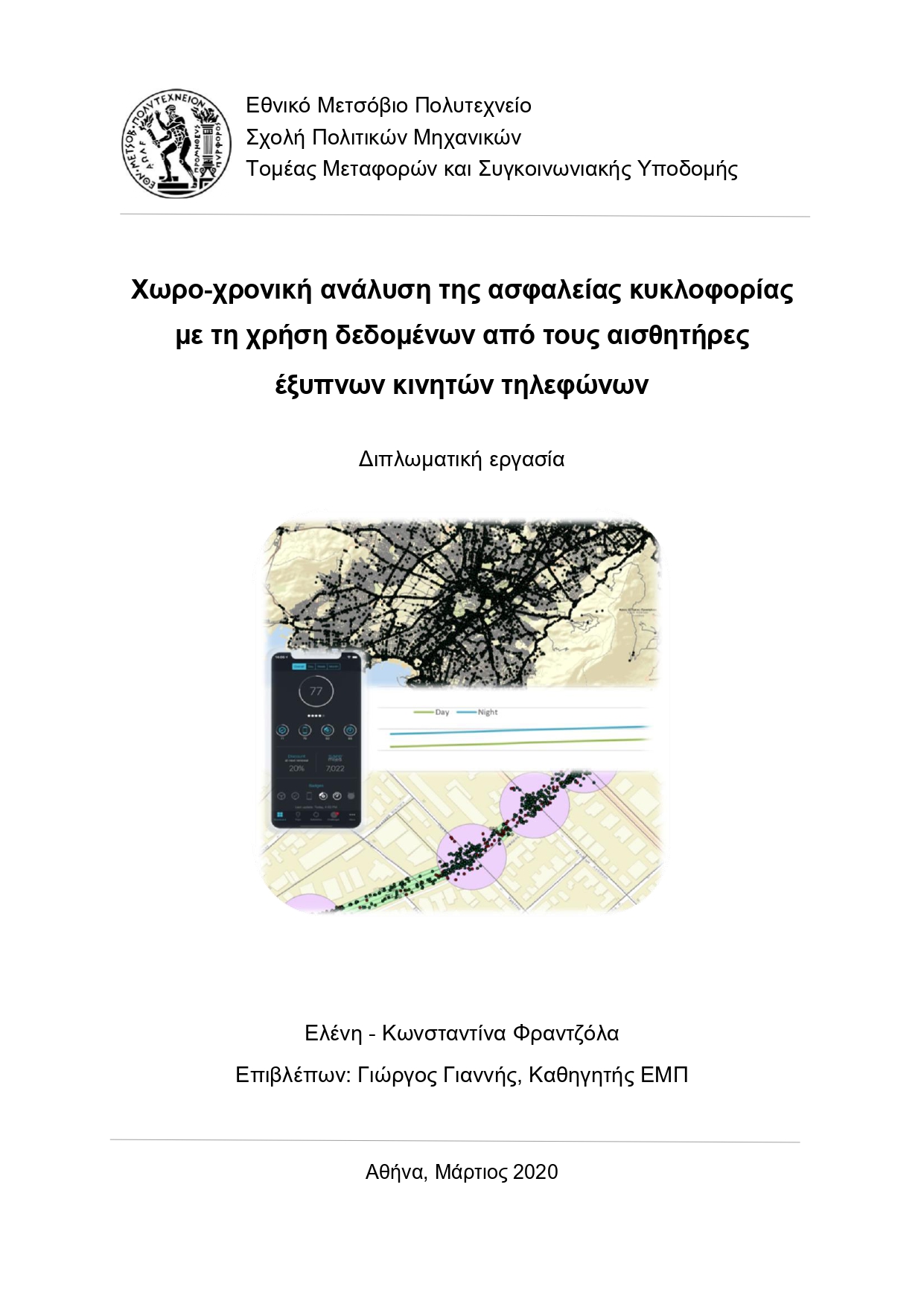
The objective of this Diploma Thesis is the spatio-temporal analysis of traffic safety using data from smartphone sensors. Τraffic safety, expressed as the frequency of harsh events, was investigated at junction and road section level, during daytime and nighttime. To this purpose, data collected from an innovative application for smartphones, combined with traffic and road characteristics, were used. Subsequently, data were imprinted spatially using Geographical Information Systems and log-linear regression models were developed. Results reveal an increase in the number of harsh events if average traffic speed decreases in the respective areas. Furthermore, in road sections as the average occupancy increases, there is an increase in harsh accelerations, and as the average speed increases, less harsh brakes occur. It appears that traffic characteristics (traffic speed and occupancy) have the most statistically significant impact on the frequency of harsh events compared to road geometry characteristics and driver behaviour data. Finally, a strong correlation between harsh events and time variation was found, indicating an overall increase in harsh events in the nighttime.
| ID | ad100 |
| Presentation | |
| Full Text | |
| Tags | big data, driver behaviour, junctions, naturalistic driving, road infrastructure, speed, statistical modelling, telematics |













